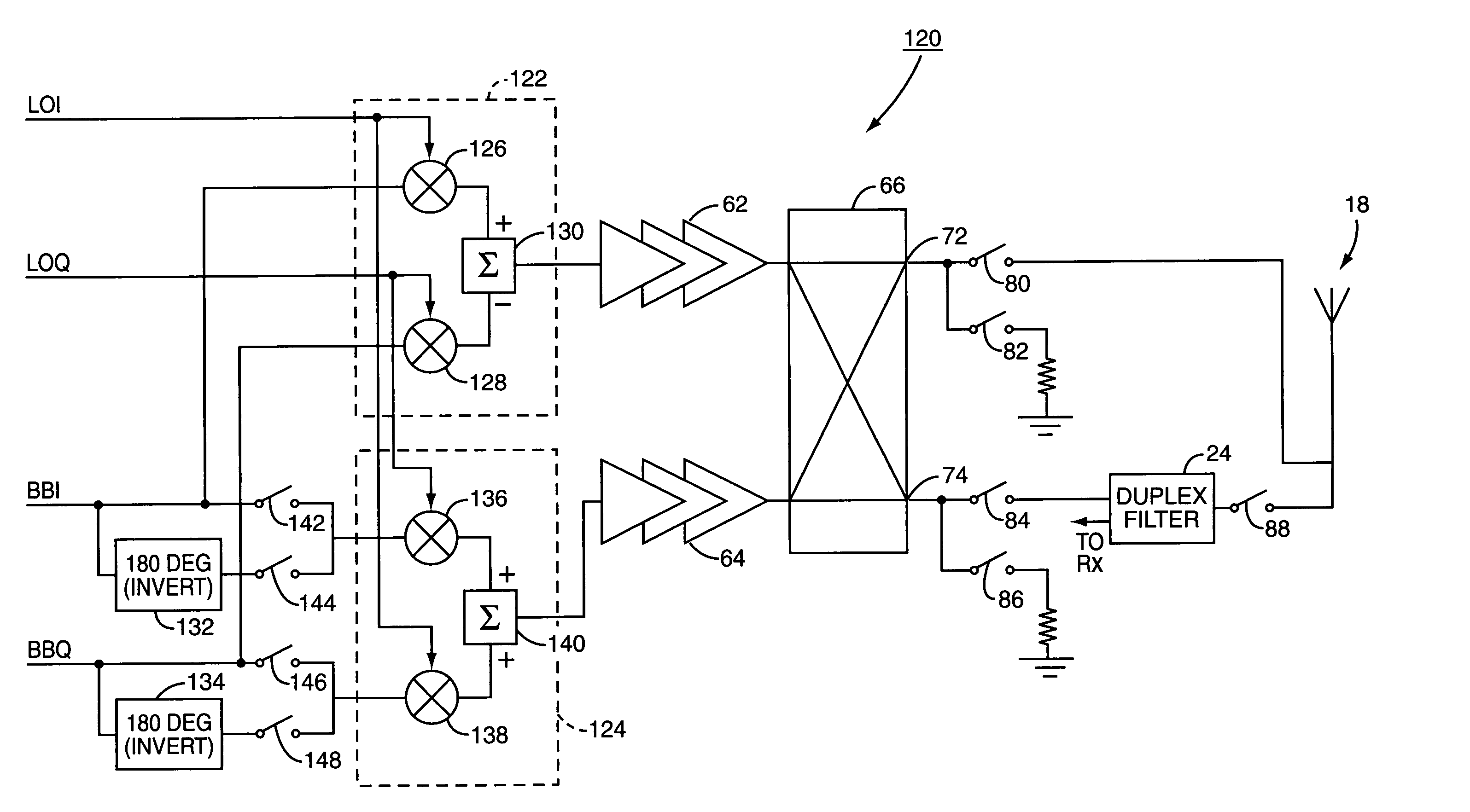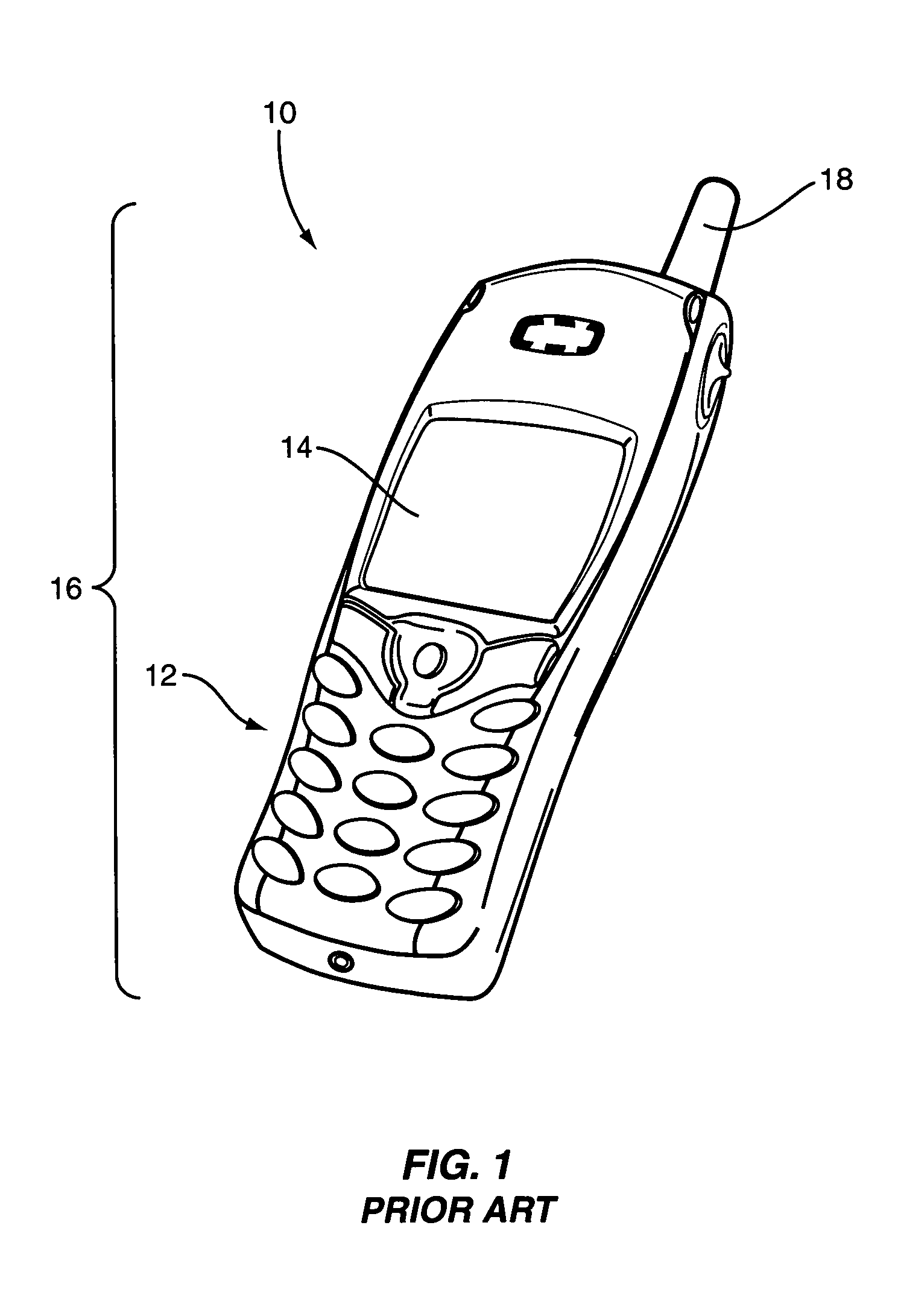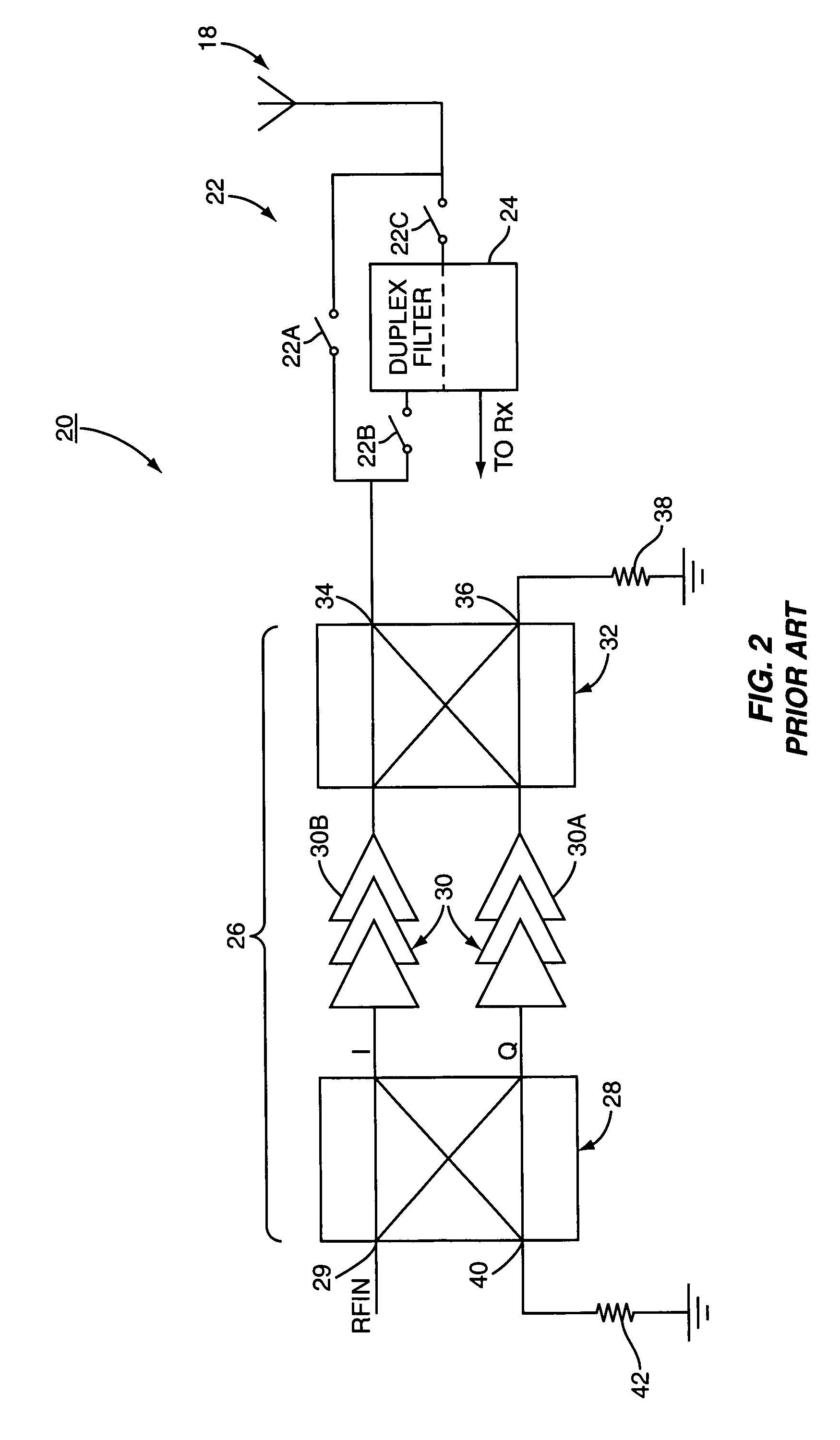Power amplifier output switch using hybrid combiner
a hybrid combiner and power amplifier technology, applied in the field of multi-mode switches, can solve the problems of increasing the size of the mobile terminal, reducing the life expectancy of the battery, and affecting the operation of the switching element,
- Summary
- Abstract
- Description
- Claims
- Application Information
AI Technical Summary
Benefits of technology
Problems solved by technology
Method used
Image
Examples
first embodiment
[0031]The present invention may use the other output port 36 in a number of different embodiments, a few of which are presented in FIGS. 3-6. A front end module 50 according to the present invention is illustrated in FIG. 3. The front end module 50 is designed to operate in two modes, which, for the sake of example, are EGPRS and WCDMA. The front end module 50 includes a splitter 52 having two inputs: a first input port 54 and a second input port 56. It is worth noting that in a conventional front end module, the first input port 54 corresponds to the normal input port and the second input port 56 is normally referred to as an isolated input port. The present invention uses the second input port 56 as is explained in more detail below. The splitter 52 has two outputs 58, 60, each of which is connected to a respective amplifier chain 62, 64. The amplifier chains 62, 64 connect to a combiner 66 through inputs 68 and 70. The combiner 66 has a first output port 72 and a second output po...
third embodiment
[0044]A third embodiment, illustrated in FIG. 5, does not rely on switching as much to achieve the desired result, but rather uses the concept of driving the inputs in phase or differentially to achieve a similar result. Specifically, a front end module 110 includes a positive phase shifter 112 and a negative phase shifter 114. The positive phase shifter 112 is, in an exemplary embodiment, a plus forty-five degree (+45°) shifter and has an input 116. The negative phase shifter 114 is, in an exemplary embodiment, a minus forty-five degree (−45°) shifter and has an input 118. Collectively, the shifters 112, 114 are sometimes referred to as a lead-lag network. In the EGPRS mode, the inputs 116 and 118 are driven in phase by the appropriate RF Signals (RFINA, RFINB). In contrast, in the WCMDA mode, the inputs 116 and 118 are driven differentially by RFINA and RFINB. In a particular embodiment, the inputs 116 and 118 are driven one hundred eighty degrees (180°) out of phase when driven d...
PUM
 Login to View More
Login to View More Abstract
Description
Claims
Application Information
 Login to View More
Login to View More - R&D
- Intellectual Property
- Life Sciences
- Materials
- Tech Scout
- Unparalleled Data Quality
- Higher Quality Content
- 60% Fewer Hallucinations
Browse by: Latest US Patents, China's latest patents, Technical Efficacy Thesaurus, Application Domain, Technology Topic, Popular Technical Reports.
© 2025 PatSnap. All rights reserved.Legal|Privacy policy|Modern Slavery Act Transparency Statement|Sitemap|About US| Contact US: help@patsnap.com



